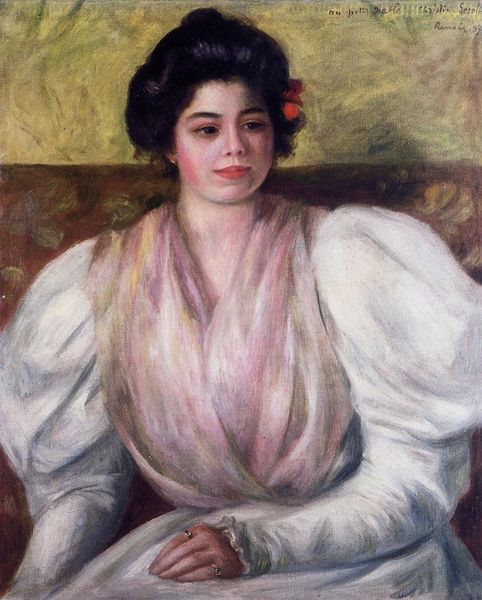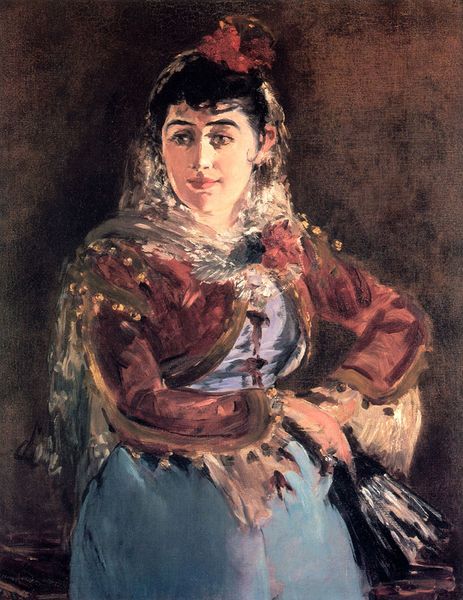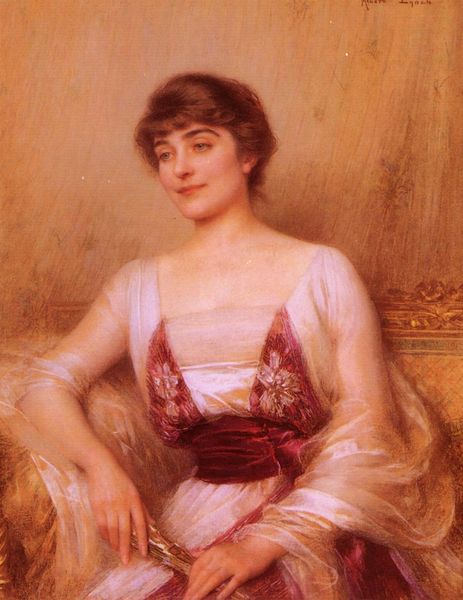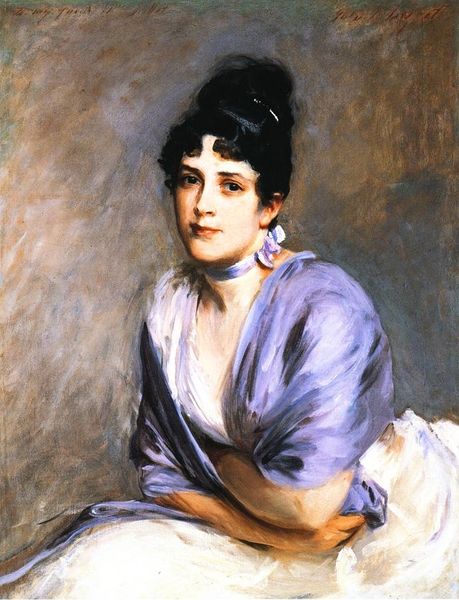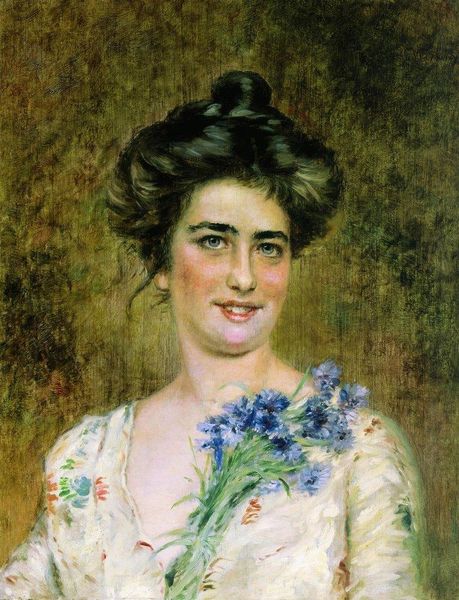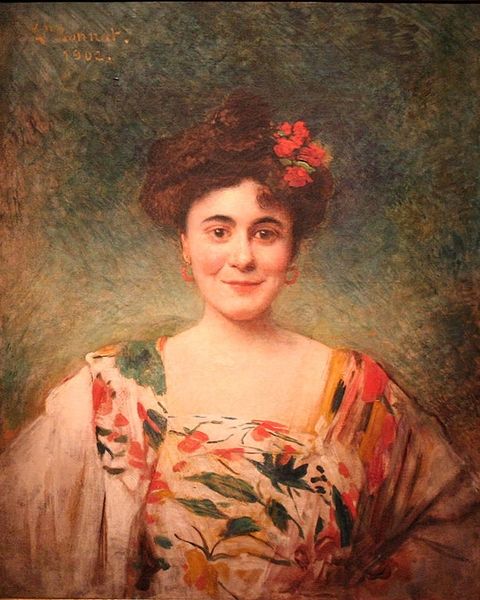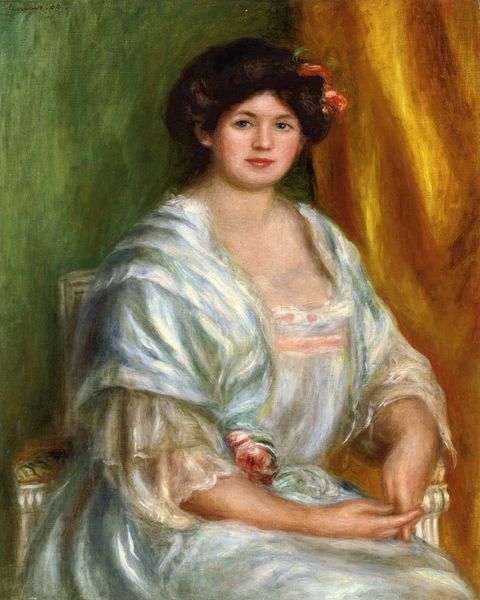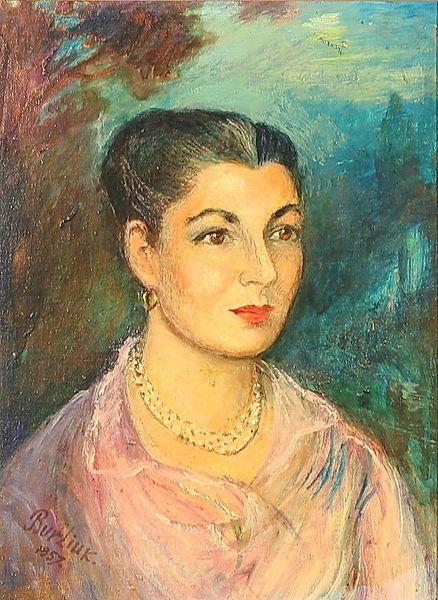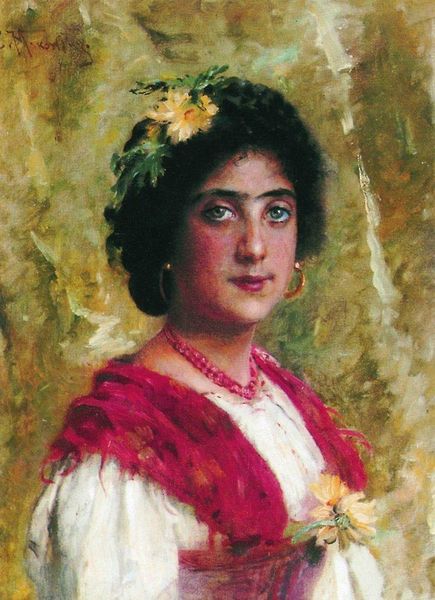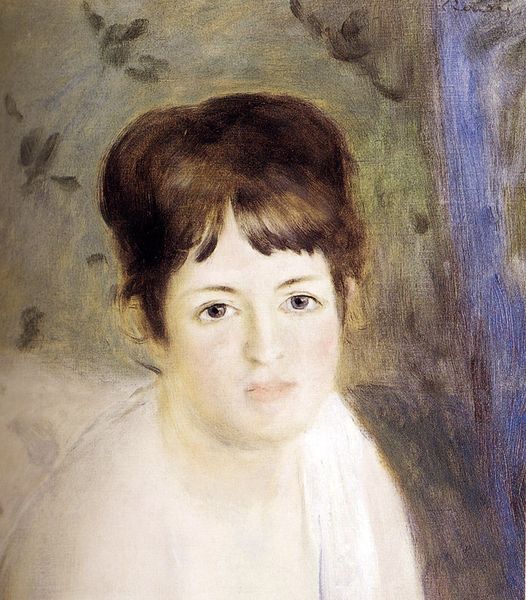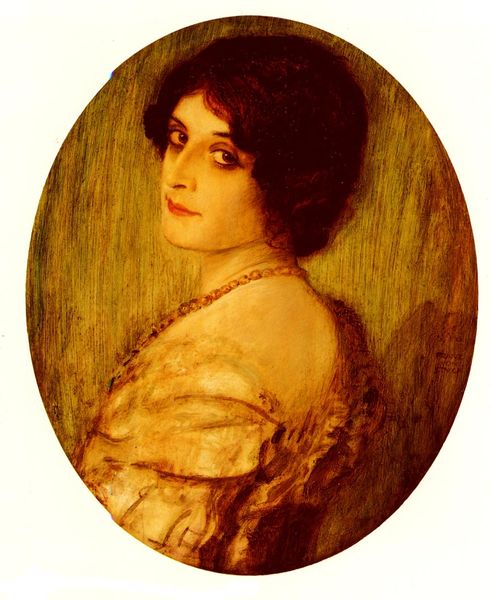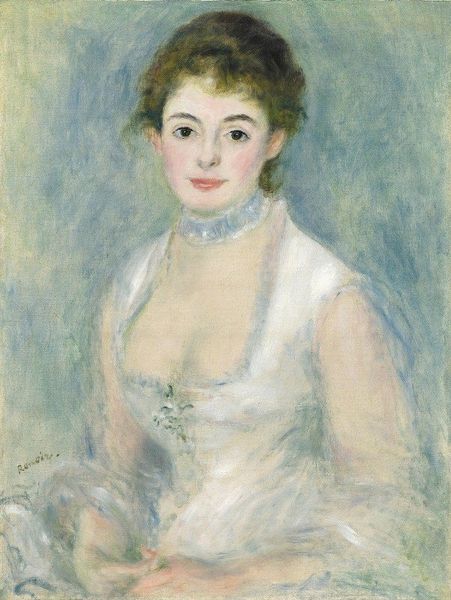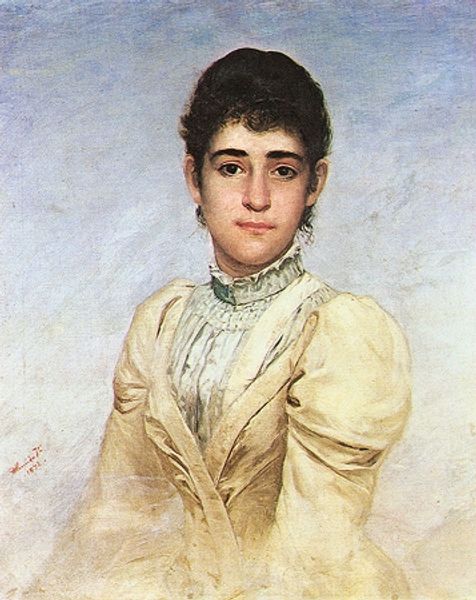
Copyright: Public domain
Editor: So, this is Renoir’s "Madame Paul Gallimard née Lucie Duché," painted in 1892. It's oil on canvas, a fairly standard portrait setup. The thing that really strikes me is the sort of… placidness of it all. It’s technically impressive, sure, but what do you see in this piece, beyond the surface? Curator: It's crucial to consider who was commissioning these portraits. Think of the rising bourgeoisie in late 19th-century France. Renoir became exceptionally skilled at capturing their aspirations. Lucie Duché's marriage into the Gallimard family—patrons of the arts and literature—elevated her social standing. This portrait becomes a symbol of that ascension. It's not just about capturing her likeness, it's about cementing her place within a specific social sphere. Editor: So, you're saying the portrait itself performs a social function, rather than just being aesthetically pleasing? Curator: Precisely. Consider the dress. The subtle hues, the delicate fabrics – they speak to wealth and status. But there’s also a softness, an intimacy, that deviates slightly from purely official portraiture. This suggests Renoir's skill at subtly flattering his patrons, reinforcing their desired image, while maintaining an air of artistic integrity. Do you think a harsher, more “realistic” depiction would have been received as well? Editor: Probably not! I see what you mean. It's like the portrait is curating an identity, both for Madame Gallimard and for the artist himself, to a certain extent. I never really considered it that way before. Curator: Exactly! And think about the power dynamics inherent in the commission. Whose gaze controls the narrative? It’s not just Renoir’s, it’s also, ultimately, Madame Gallimard’s, and the entire societal context she inhabits. It’s quite intricate when you dig into it, isn’t it? Editor: It really is. Now I’m seeing this painting, and portraiture in general, as much more than just capturing a likeness. Thanks for sharing your insights. Curator: My pleasure. Thinking about the societal forces at play adds a new layer of understanding.
Comments
No comments
Be the first to comment and join the conversation on the ultimate creative platform.
